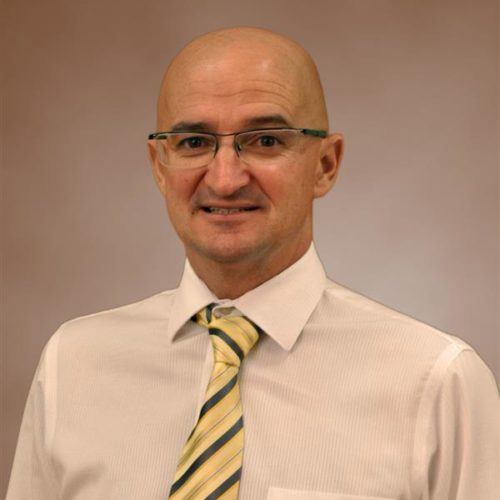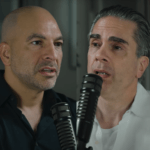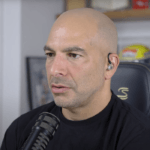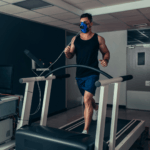Check out more content with expert, Iñigo San Millán, Ph.D.:
- (December 23, 2019) Part I of II: Zone 2 Training and Metabolic Health
- (March 28, 2022) Part II of II: Deep dive back into Zone 2 Training
In this episode, Dr. Iñigo San Millán, Assistant Professor at the University of Colorado School of Medicine, explains the crucial role of mitochondrial function in everything from metabolic health to elite exercise performance. Iñigo provides a masterclass into the many different energy system pathways, the various fuel sources (including the misunderstood lactate), the six zones of exercise training, and the parameters he uses to measure metabolic health. Additionally, he highlights the power of zone 2 training in its ability to act as a powerful diagnostic tool, and perhaps more importantly as a treatment for mitochondrial and metabolic dysfunction.
Subscribe on: APPLE PODCASTS | RSS | GOOGLE | OVERCAST | STITCHER
We discuss:
- Iñigo’s background in sports and decision to focus on education [7:15];
- Explaining the various energy systems and fuels used during exercise [14:45];
- Iñigo qualifies energy systems into six training zones [23:00];
- Lactate is an important fuel source [33:00];
- Zone 2 training—physiologic characteristics, fuel sources, lactate, and the transition into zone 3 [40:30];
- Using blood lactate levels (and zone-2 threshold) to assess mitochondrial function [47:00];
- Accessing mitochondrial function by looking at one’s ability to utilize fat as fuel (with an RQ test) [55:00];
- Athletes vs. metabolically ill patients—mitochondria, fat oxidation, muscle glycogen capacity, “fat droplets”, and more [1:00:00];
- Physiologic characteristics of zone 3, zone 4, and the lactate threshold [1:20:00];
- Fueling exercise—dietary implications on glycolytic function [1:30:30];
- Relationship between exercise and insulin sensitivity (and what we can learn from studying patients with type 1 diabetes) [1:46:30];
- Metformin’s impact on mitochondrial function, lactate production, and how this affects the benefits of exercise [2:04:15];
- Raising awareness for risk of “double diabetes” [2:15:00];
- How to dose zone 2 training, and balancing exercise with nutrition [2:18:00];
- Proposed explanation of the Warburg Effect: Role of lactate in carcinogenesis [2:27:00];
- Doping in cycling, and the trend towards altitude training [2:39:15] and;
- More.
Iñigo’s background in sports and decision to focus on education [7:15]
- He works with elite and recreational athletes in his clinical and research work and he was an athlete himself
- Grew up in spain, played fútbol for Real Madrid Academy for six years
- At 16, he discovered cycling and changed sports – racing professionally for six years
- He became very familiar with everything the sport involves at an elite level
- The distinction between ability of top caliber cyclists is not subtle
- Decreasing categories represent higher ability levels with category 1 being the immediate step below professional level
- even between category one collegiate athletes
- At a professional level there is a step between a domestic and European pro and moreover, between a European pro and a major team
- Iñigo left racing behind when he decided to focus on his studies – did an internship at a sports medicine clinic in Spain where Platelet Rich Plasma Therapy (PRP) was developed
- Has been at the University of Colorado for 11 years
- Works with professional cycling teams and has developed a protocol for zone 2 training as a way to improve and test mitochondrial function
Explaining the various energy systems and fuels used during exercise [14:45]
- Defines metabolic training zones by type of muscle fiber recruitment and whether energy demand is aerobic and anaerobic
- Outside of sprinting, we do the majority of activity in an aerobic state
- Fuel type utilized used to produce energy is what changes
- Peter refers to aerobic and anaerobic energy systems in a previous blog post
“The immense majority of activity that we do is aerobic. We tend to believe that any hard effort is anaerobic, and therefore the concept of anaerobic threshold. But actually, even what we call the anaerobic threshold is aerobic activity. The majority of the efforts that we do are in an aerobic environment except for when you do a sprint…or a one minute maximal.” – Iñigo San Millán, Ph.D.
Muscle Fiber Type
- Depending on the energy system (training zone) different muscle fibers are recruited
- “Slow” and “fast” twitch fibers require different force
- The speed refers to how quickly the fibers fatigue
- Type I muscle fibers are used during low intensity exercises
- Don’t need to contract as forcefully
- Have a high oxidative and low glycolytic capacity
- Speed refers to how quickly they fatigue
- type 2 fiber divided into 2A and 2B
- IIA have high oxidative and glycolytic capacity and fatigue relatively slowly
- IIB have low oxidative and high glycolytic capacity and fatigue quickly (recruited for anaerobic sprint – short time duration under stress)
- Fatigue faster because metabolically more stressed
Cellular Fuels
- Main fuels: fatty acids and glucose
- Fatty acids are the cellular fuel source for lower intensity activities…
{end of show notes preview}

Iñigo San Millán, Ph.D.
Iñigo San Millán, Ph.D. is an Assistant Professor at the University of Colorado School of Medicine, where his areas of research, clinical work, and interests include exercise metabolism, nutrition, sports performance, overtraining, diabetes, cancer, and critical care. He’s internationally renowned applied physiologist having worked for the past 20 years for many professional teams and elite athletes worldwide across multiple sports like running, football, soccer, basketball, rowing, triathlon, swimming, Olympics and cycling, including eight Pro Cycling Teams. Iñigo has also been a consultant in exercise physiology and sports medicine to international organizations like the US Olympic Committee and the International Cycling Union. He has been a pioneer in developing new methodologies for monitoring athletes at the metabolic and physiological level including a novel method to measure mitochondrial function and metabolic flexibility as well as the invention of the first method to measure skeletal muscle glycogen in a non-invasive way using high frequency ultrasound. Previously, Inigo was a competitive athlete and played soccer for 6 years for Real Madrid soccer academy team as well as raced as a professional cyclist for 2 years. He also returns to Spain every summer to run with the bulls. [ucdenver.edu]
Twitter: @doctorinigo






It would also be amazing if you can interview Prof. Jeff Volek, and discuss about keto-adapted performance.